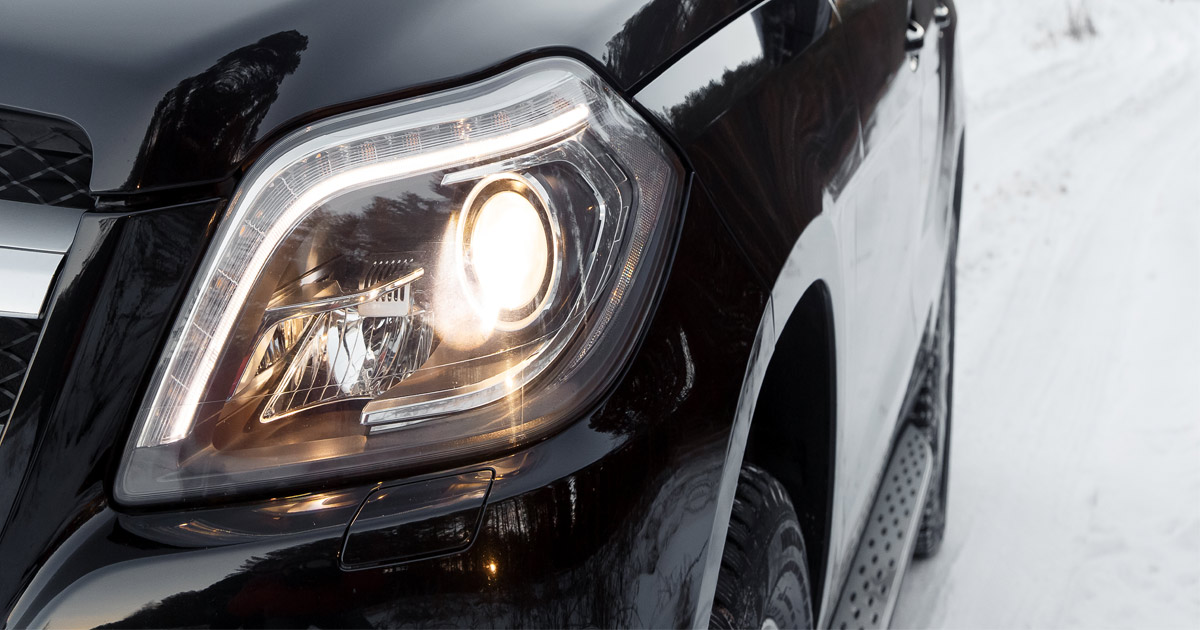January 25, 2022
How Can I Avoid a Car Accident by Using My Headlights?

The prolonged darkness of the fall and winter season is upon us, and with that is reduction in daylight hours. We will not return to Daylight Saving Time until Sunday, March 13, 2022. That means we will continue to deal with more time driving in the dark for at least the next two months.
Sometimes, motorists never bother to turn their headlights on at all because they are under the misconception that LED daytime running lights are a substitute for actually turning on your car’s headlights. However, that is not the case. Many car manufacturers now include daytime running lights as standard car tools, and most utilize LED lighting. Drivers should be aware that daytime running lights are not the same as your car’s headlights, and substituting these lights for headlights can mean a ticket, or worse, a car accident.
The Dangers of Using Daytime Running Lights at Night
Halogen or LED daytime running lights are developed to be dimmer than headlights and do not brighten up the roadway in the manner that headlights do. Also, when daytime running lights are in use, the taillights and license plate lights are not illuminated at all, which basically leaves your car lurking in darkness from other drivers who cannot see it on the roadway.
Many drivers are not going out of their way to use their headlights, but other drivers may be under the impression that their headlights are on, but they are only utilizing their vehicle’s extremely bright LED daytime running lights.
Motorists might be driving in areas illuminated by streetlamps or other well-lit sources where daytime running lights work well. However, they do not realize that their cars are not as visible to other drivers.
Drivers may be used to driving older model vehicles, in which the gauge clusters are not illuminated until the headlights are on. However, most newer vehicles have LED gauge clusters that stay illuminated at all times. Motorists who have just bought a new car may not realize that their headlights are not on.
Headlight Safety Tips
Follow these tips to ensure that you are driving with your car illuminated at any time of the season.
- Refer to your owner’s manual, or look up your vehicle online, so that you can know your vehicle’s symbols for both daytime running lights and headlights. After that, when you look at your car’s dashboard you will be aware of which of the two you have on when you are driving and be able to turn your headlights on at night should you need to.
- Check to make sure your headlights and taillights are working and replace any non-working bulbs promptly.
- Utilize the automatic headlights setting if your vehicle has it.
- Develop the habit of always turning on your headlights at the first glimpse of dusk and if you are an early morning motorist, leaving them on until after sunrise. Each state has its own laws about when headlights must be used.
AAA reports that only 25 percent of driving takes place when the sun is not present, yet 50 percent of accident occur in the darkness. Drivers should guarantee that their headlights are in good working order and that they understand their headlights’ restrictions.
Much like the rest of your vehicle, maintenance of your headlights should be a high priority when your vehicle receives any maintenance. In order to make sure that your headlights are operating at maximum capacity, always keep them clean, check your headlights’ aim, and immediately replace a burnt-out light.
A Reminder from PennDOT
The Pennsylvania Department of Transportation (PennDOT) wants drivers to employ their car’s headlights when they utilize their vehicle’s windshield wipers, a state law, along with turning them on between dusk and dawn, in fog, when visibility is less than perfect, and any time that it helps you see the road better.
PennDOT also reminds drivers that daytime running lights, a normal feature on modern cars, are not to be substituted for headlights at night, and a driver must turn on their headlights to activate their taillights.
State law also requires drivers to travel with their headlights turned on in all posted work zones, not just active work zones. The Pennsylvania State Police issued over 600 citations for motorists who did not use headlights and wipers when required to do so in 2015 alone.
Maximum Brightness of Light Types
According to AAA, depending on your vehicle’s lights, they will employ the following maximum brightness capacity.
-
Halogen reflectors
Low beam range: 300 feet
Highest safe speed on unlit road: 39 mph
High beam range: 400 feet
Highest safe speed on unlit road: 48 mph
-
Halogen projectors
Low beam range: 400 feet
Highest safe speed on unlit road: 45 mph
High beam range: 500 feet
Highest safe speed on unlit road: 55 mph
-
High-intensity discharge lamps
Low beam range: 400 feet
Highest safe speed on unlit road: 45 mph
High beam range: 500 feet
Highest safe speed on unlit road: 55 mph
-
Light-emitting diodes
Low beam range: 450 feet
Highest safe speed on unlit road: 52 mph
High beam range: 500 feet
Highest safe speed on unlit road: 55 mph
Montgomery County Car Accident Lawyers at Anthony C. Gagliano III, P.C., Help Clients in Car Accidents Caused by Drivers Not Using Their Headlights
Unfortunately, there are motorists on the road who do not turn their headlights on because they believe that daytime running lights are sufficient. If you have been involved in a car accident caused by a negligent driver, the experienced Montgomery County car accident lawyers at Anthony C. Gagliano III, P.C., can help you. Call us at 267-861-7100 or visit our website to set up a free consultation. Located in Philadelphia, we serve clients in Philadelphia, Montgomery County, Delaware County, and Norristown.